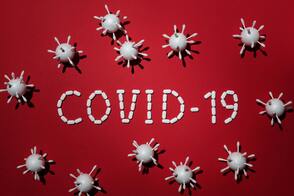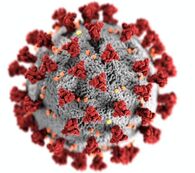|
BY: CAPRI MILLS Hi! My name is Capri Mills. I'm a junior in high school and have a passion for science, psychology, and writing. I also enjoy giving back to the environment and my community in any way I can. After high school, I plan to continue on a neuroscience path throughout college and beyond.  As we all know, COVID-19 has dominated our lives these past few months, with signs about it in every store and new mandates announced nearly weekly. Although many news stations broadcasted stories about the virus seemingly nonstop, many people still don’t know the exact science of it. But they should—it’s imperative to know what exactly will happen to your body if you get the virus based on the knowledge of what has happened to the bodies of those who have gotten it. Before we get into the nitty-gritty of COVID-19, though, let’s talk about what it actually is. Well, as we all know, it’s a virus. But viruses are often misunderstood. Contrary to popular belief, viruses aren’t actually alive (McNeil). Instead, a virus is a strand of genetic material, either DNA or RNA, rolled up inside of a protein shell. And despite being clever and mutating to fit environmental conditions, viruses cannot survive long without a host (McNeil). That’s why they need us. Inside of our bodies, they can use our own cells against us to do the dirty work. They do this by hijacking our cells and forcing them to reproduce the virus’s genetic code, making as many of themselves as possible (Gelderblom).  Let’s turn to coronaviruses in particular now. All coronaviruses have a “spiky” shell, which is why their prefix is corona since it’s Latin for crown, precisely what the spikes look like underneath a microscope ("What Is Coronavirus? The Different Types of Coronaviruses."). These spikes, while good for the virus, are problematic to us. They allow the virus to survive for a long period without a host and attach themselves to cells. But unlike other coronaviruses, COVID-19 attaches to cells in our lower respiratory tract, not our higher one. This is where it gets into the lungs, heart, kidney, liver, brain, and more (Goldman). Inside of the lungs, COVID-19 leaves damage in its wake as it attacks more and more cells, creating symptoms like fever and low blood pressure (Paul). It first strikes the epithelial cells (kind of like our body’s shield) in our airways, leaving our body undefended to fluid and debris (“Learn about COVID-19”). Later, COVID-19 moves on to invade the air sacs, called alveoli, in our lungs. This is especially bad because when the alveoli become too damaged and inflamed, pneumonia ensues, leaving the possibility of long-lasting damage, like shortness of breath. Moreover, the type of pneumonia COVID-19 causes is said to leave your lungs looking like ground-up glass, and if pneumonia progresses, it can turn into acute respiratory distress syndrome, which is where the alveoli fill with fluid, making it hard to breathe (Seladi-Schulman). It’s evident that COVID-19, though portrayed by some to be merely a short-term illness, certainly can leave a lasting impact on its victims. As always with science, knowing how viruses invade and damage cells are important, as it can hopefully help us protect against them. So stay knowledgeable. Works Cited Gelderblom, Hans R. "Structure and Classification of Viruses." Medical Microbiology. 4th Edition. U.S. National Library of Medicine, 01 Jan. 1996. Web. 14 June 2021.
Goldman, Bruce. "How the Coronavirus Destroys Cells and How Scientists Attempt to Disarm It." Stanford Medicine. 15 Oct. 2020. "Learn about COVID-19." Learn about COVID-19 | American Lung Association. Web. 14 June 2021. Paul, Marla. "Why COVID-19 Pneumonia Lasts Longer, Causes More Damage than Typical Pneumonia." Why COVID-19 Pneumonia Lasts Longer, Causes More Damage than Typical Pneumonia. 11 Jan. 2021. Web. 14 June 2021. Seladi-Schulman, Jill. "What to Know About COVID-19 and Pneumonia." Healthline. Ed. Meredith Goodwin. Healthline Media, 09 June 2020. Web. 14 June 2021. McNeil, Taylor. "What Are Viruses and How Do They Work?" Tufts Now. 03 Apr. 2020. Web. 14 June 2021. "What Is Coronavirus? The Different Types of Coronaviruses." UKRI. 25 Mar. 2020. Web. 14 June 2021.
1 Comment
8/25/2021 06:44:47 pm
Thank for sharing this very useful and helpful article. I also wanna share about the experience from Genuine Haarlem Oil products very effective for respiratory problem as your partner everyday. They offer good quality products and services for human and animals.
Reply
Leave a Reply. |
Quest Student Research InstituteOn Science, Computation, Medicine, and Academic Success Archives
January 2022
|

 RSS Feed
RSS Feed